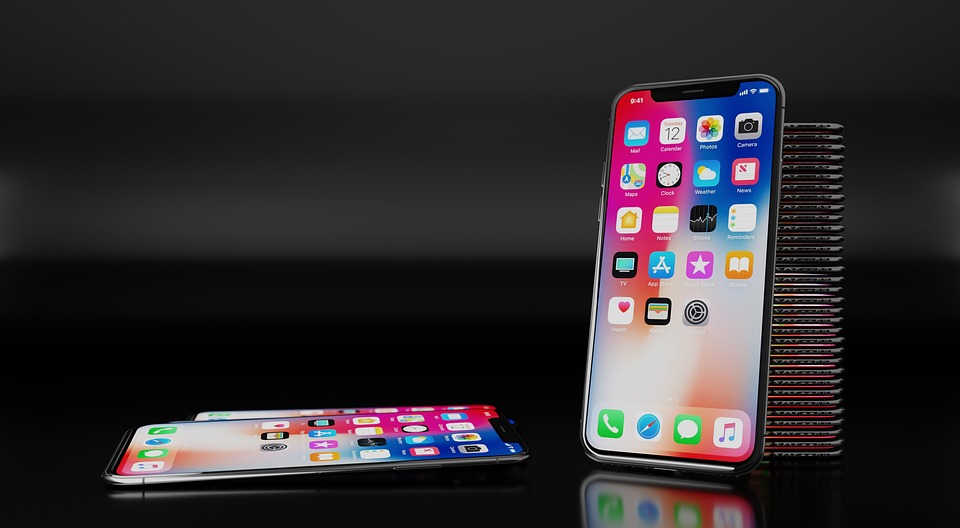Although there have arguably been excellent handsets launched this year already, analysts are eagerly anticipating the release of Apple and Google’s flagship phones. Both the iPhone XI and the Pixel 3 are scheduled for release later this year, and expectations are high. Some details regarding the supposed benchmark of Apple’s next handset have apparently been available for a while.
Due to rumors and leaks, a blurry picture of what can be expected from both the iPhone XI and Pixel 3 is forming, New Atlas reports. For starters, many analysts seem to agree that three iPhone models are set for release in 2018.
One is likely to be the iPhone 9, which is predicted to be cheaper than the upcoming iPhone XI. The latter product is also expected to keep the same $999 base price as the iPhone X. Then there’s the third rumored iPhone model, which might feature a 6.1-inch LCD screen. This one might retail for as low as $700.
As for the Pixel 3 and the Pixel 3 XL, both Google handsets are predicted to have similar internal components. Their biggest difference is down to the sizes of their screens, which inevitably affects their prices.
The cheaper model is expected to come with a 5.4-inch screen, while the more expensive version will supposedly have a 6.2-inch screen. Both are likely to feature high-quality image-processing capabilities even with single-sensor rear cameras.
The actual prices of the devices have not been officially released as of this writing, but Google might aim for a similar price point to its previous phones. The Pixel 2 and the Pixel 2 XL retailed at $649 and $849, respectively.
In terms of performance, a benchmark for the iPhone XI is apparently already available for viewing, Gizmodo U.K. reports. This benchmark test comes courtesy of Geekbench, which recently added the upcoming Apple smartphone to its listings.
It would appear that the iPhone XI sports the same six-core processor as the iPhone X. However, its base frequency seems higher at 2.49GHz, compared to the previous model’s 2.39GHz. Core testing scores also showed a marked improvement, with the 4,673 single-core and 10,912 multi-core scores.



 EssilorLuxottica Bets on AI-Powered Smart Glasses as Competition Intensifies
EssilorLuxottica Bets on AI-Powered Smart Glasses as Competition Intensifies  U.S.-EU Tensions Rise After $140 Million Fine on Elon Musk’s X Platform
U.S.-EU Tensions Rise After $140 Million Fine on Elon Musk’s X Platform  EU Court Cuts Intel Antitrust Fine to €237 Million Amid Long-Running AMD Dispute
EU Court Cuts Intel Antitrust Fine to €237 Million Amid Long-Running AMD Dispute  SK Hynix Considers U.S. ADR Listing to Boost Shareholder Value Amid Rising AI Chip Demand
SK Hynix Considers U.S. ADR Listing to Boost Shareholder Value Amid Rising AI Chip Demand  Trello Outage Disrupts Users as Access Issues Hit Atlassian’s Work Management Platform
Trello Outage Disrupts Users as Access Issues Hit Atlassian’s Work Management Platform  SK Hynix Labeled “Investment Warning Stock” After Extraordinary 200% Share Surge
SK Hynix Labeled “Investment Warning Stock” After Extraordinary 200% Share Surge  Australia’s Under-16 Social Media Ban Sparks Global Debate and Early Challenges
Australia’s Under-16 Social Media Ban Sparks Global Debate and Early Challenges  US Charges Two Men in Alleged Nvidia Chip Smuggling Scheme to China
US Charges Two Men in Alleged Nvidia Chip Smuggling Scheme to China  China Adds Domestic AI Chips to Government Procurement List as U.S. Considers Easing Nvidia Export Curbs
China Adds Domestic AI Chips to Government Procurement List as U.S. Considers Easing Nvidia Export Curbs  Trump Signs Executive Order to Establish National AI Regulation Standard
Trump Signs Executive Order to Establish National AI Regulation Standard  Nvidia Develops New Location-Verification Technology for AI Chips
Nvidia Develops New Location-Verification Technology for AI Chips  Moore Threads Stock Slides After Risk Warning Despite 600% Surge Since IPO
Moore Threads Stock Slides After Risk Warning Despite 600% Surge Since IPO  U.S. Greenlights Nvidia H200 Chip Exports to China With 25% Fee
U.S. Greenlights Nvidia H200 Chip Exports to China With 25% Fee  Intel’s Testing of China-Linked Chipmaking Tools Raises U.S. National Security Concerns
Intel’s Testing of China-Linked Chipmaking Tools Raises U.S. National Security Concerns  Adobe Strengthens AI Strategy Ahead of Q4 Earnings, Says Stifel
Adobe Strengthens AI Strategy Ahead of Q4 Earnings, Says Stifel  Apple App Store Injunction Largely Upheld as Appeals Court Rules on Epic Games Case
Apple App Store Injunction Largely Upheld as Appeals Court Rules on Epic Games Case 































